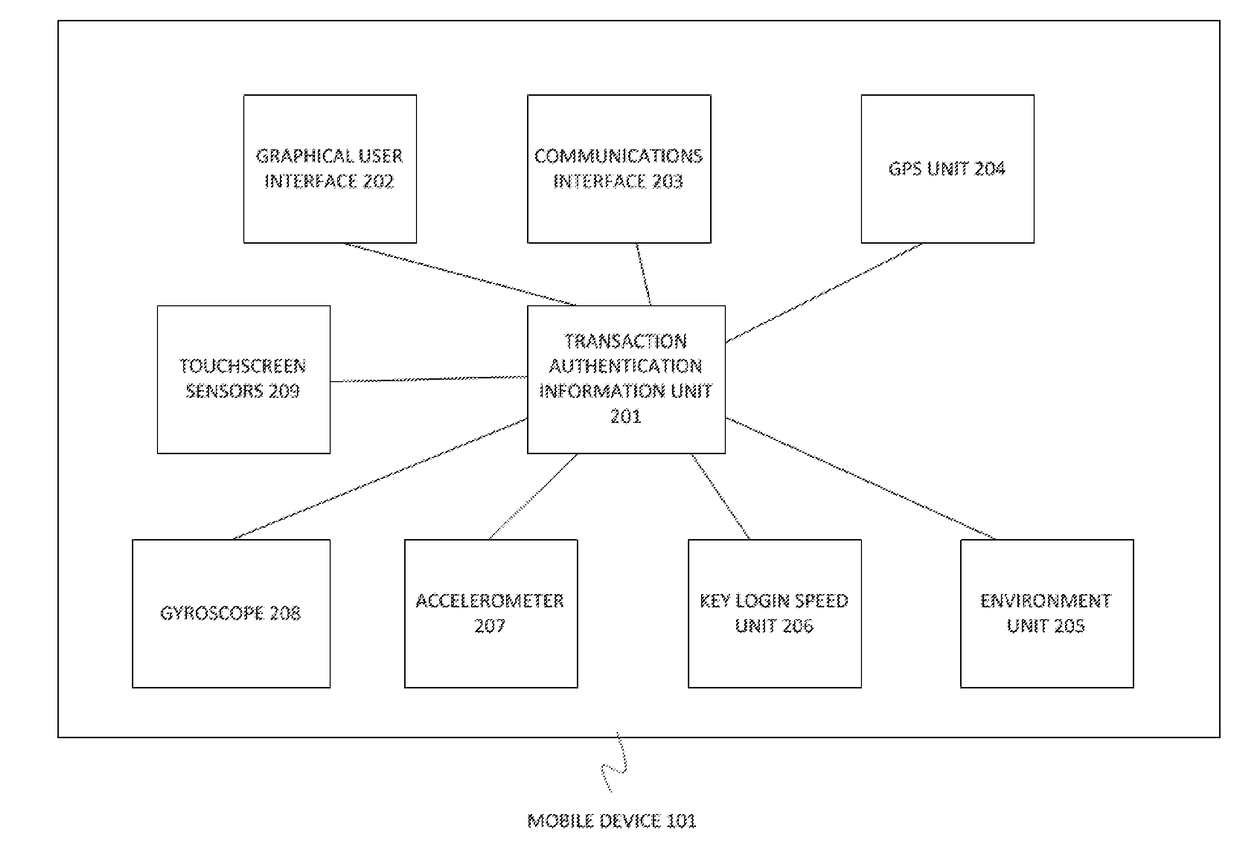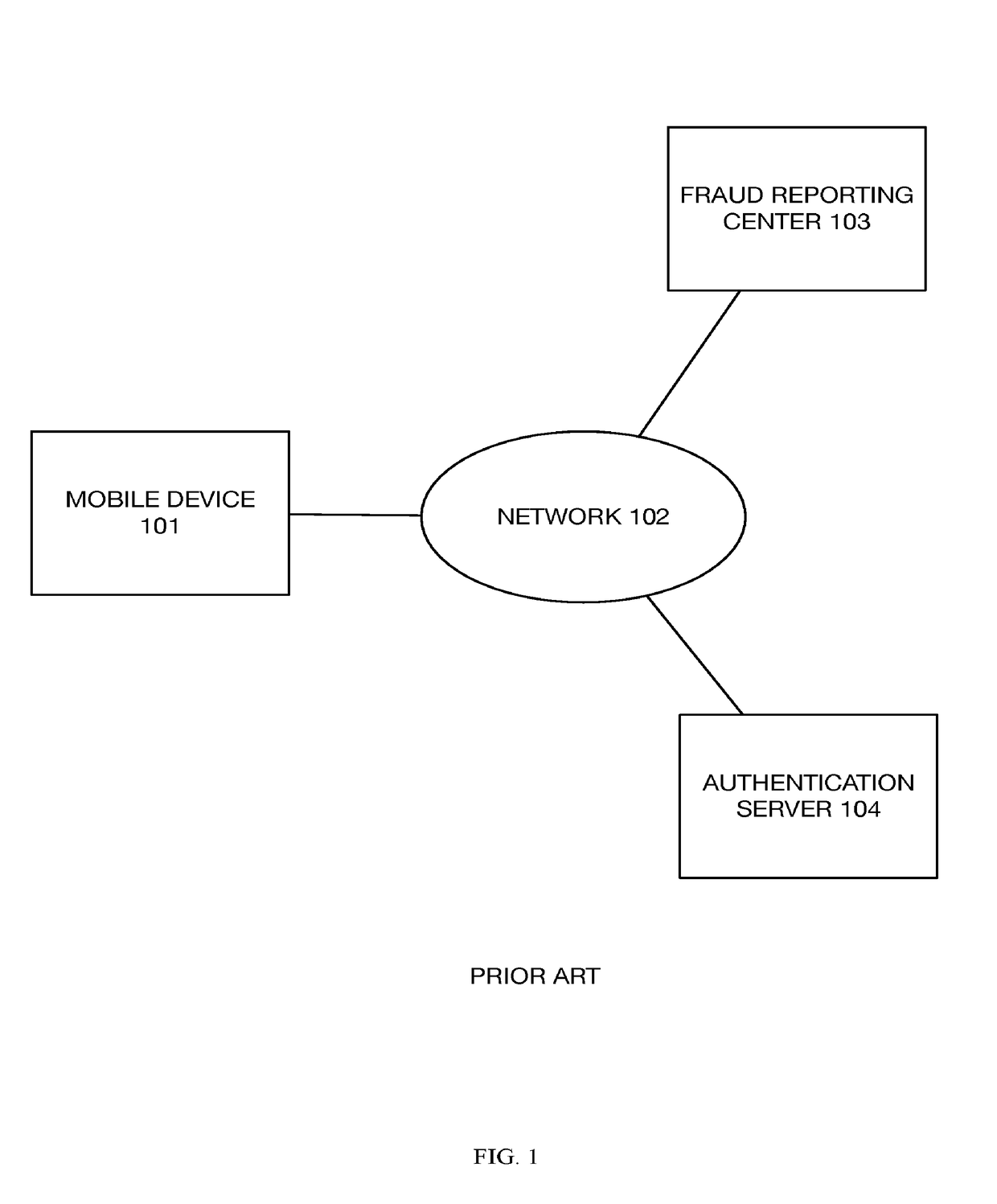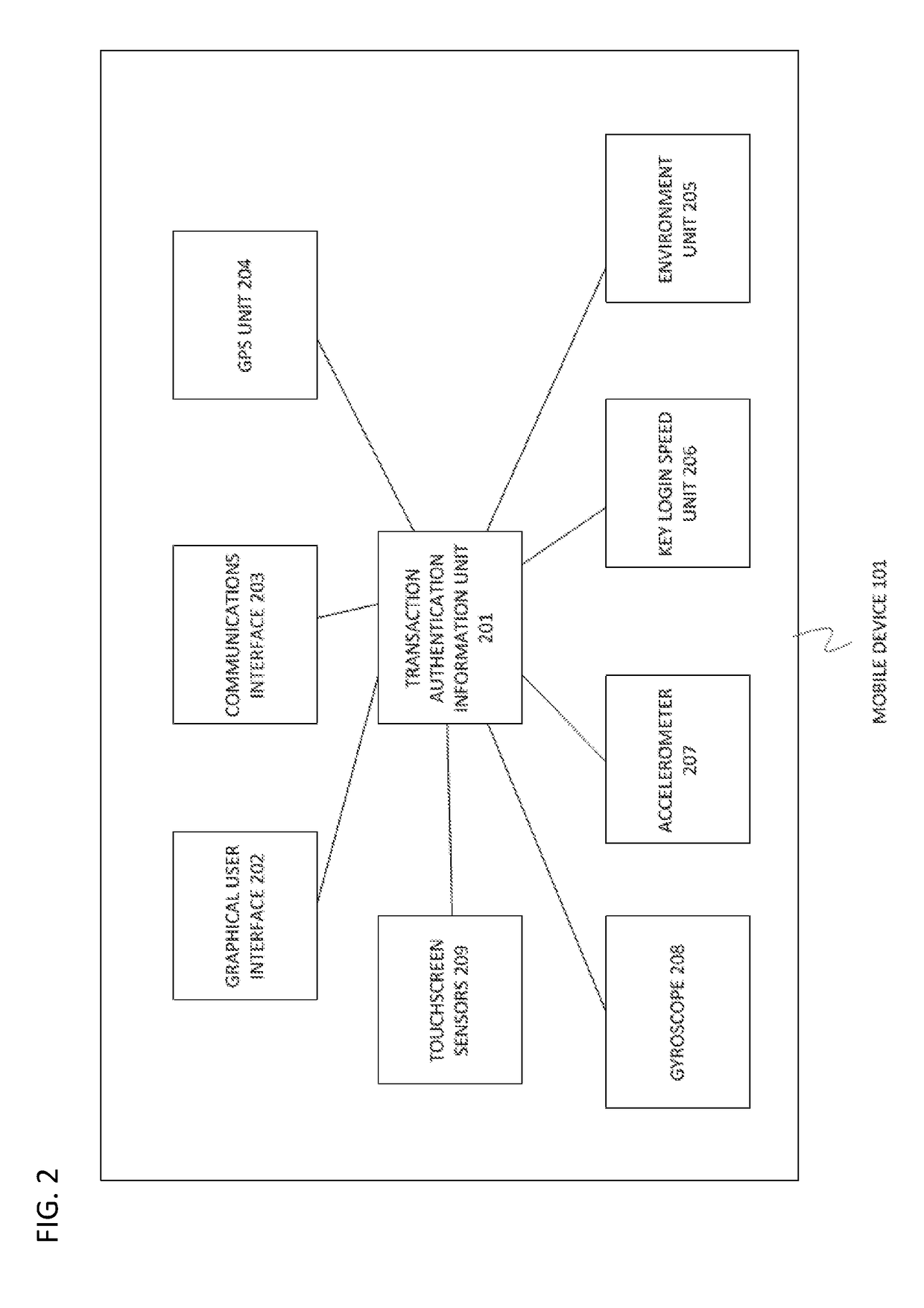Mobile devices such as smartphones, tablets and including wearable computing devices such as Google® Glass are vulnerable to being used by unauthorized individuals or impostors all the time.
Whether it is a thief who steals it from a purse on a subway, a romantic partner checking text messages for signs of an affair, or a child looking to play games, mobile device users run serious risks when unauthorized users or impostors obtain access to such devices.
While lockscreens can provide significant protections when properly used, they can also degrade the
usability of a device by inserting an unwanted step—the authentication step—between the user and their objective of using their phone at all times of the day and night.
Even when users do enable these mechanisms, users may configure these mechanisms using weak credentials or so the device locks itself infrequently.
Further, the protection provided is also incomplete, as some unauthorized users or impostors will know how to bypass the
lock screen.
To date, however, commercially available prior art and prior use systems have offered only improved security guarantees, such as by ensuring the correct person is entering a PIN or
password pattern, rather than the improved
usability of a non-intrusive
authentication system.
While results from these prior art systems show that it is possible to distinguish users using mobile device sensors and
machine learning algorithms, these prior art systems do not use appropriate algorithms or the appropriate evaluation methodologies that are required for building and assessing a workable implicit
authentication scheme.
Several factors specific to mobile devices make text-based authentication less
usable and secure than on desktop or notebook computers.
Good passwords, however, are long strings of characters that cannot be easily predicted and include multiple infrequently used characters.
Secure passwords are thus hard to enter on smartphones.
However, they are still not as easy to enter as on a physical keyboard.
Shoulder surfing is a significant problem as mobile devices are heavily used in public environments, places where an attacker / impostor can more easily observe PIN entry and steal a device.
While this is a
usability improvement over
text entry, the approach is still vulnerable to shoulder surfing by impostors, smudge attacks by impostors, as well as random guessing of common patterns.
Though this approach does increase usability by bypassing authentication in tightly bounded scenarios, it does nothing to increase either the usability or the security of authentication in public settings.
Furthermore, it also does not help with the numerous non-traditional impostor attacks mobile devices are subject to, for example, a child playing a game on a parent's work phone or tablet.
Static
biometrics generally have high true positive rates (authorized users can easily unlock the device) and high true negative rates (unauthorized users are rejected).
There are two fundamental limitations of static
biometrics, however.
Such an explicit action will, in general, be a
distraction from the user's primary task, and as such frequent authentication checks will be unacceptable to most users.
This
mimicry is fundamentally hard to stop because the primary sensor used is, essentially, a camera, and there are many ways of fooling cameras, and there are many ways of obtaining a copy of the original person's
biometric data, for example, gathering fingerprints left elsewhere on a device.
Furthermore, some static
biometrics may persist even when the user has either been killed or seriously injured by an impostor, such as, for example,
retina scans and
fingerprint authentication.
Behavioral biometrics are, in general, more challenging to develop and deploy than static biometrics because
human behavior is fundamentally variable.
(1) Learn only on user data: While it is possible to get samples of simulated malicious behavior in a lab setting, a deployed behavioral
biometric system will not have access to representative malicious behavior.
Many commonly-used
machine learning algorithms are two or multi-class learning algorithms and therefore do not meet this requirement.
In the context of smartphones this requirement is challenging as smartphone sensors may produce a deluge of data.
In
machine learning, the “
curse of dimensionality” says that as the complexity of data increases, the more data is required in order to learn a model.
This points to a
disadvantage of continuous behavioral biometrics, as these systems will have less stable observables than secondary and task-based ones, simply because continuous gathering of user behavior will inevitably mean the
system will be observing the user is highly variable contexts.
This means that it distracts from the main activity the user wants to accomplish, for example checking their email or responding to a
text message.
Because secondary biometrics require explicit authentication actions such as PIN entry, these are considered to be relatively intrusive.
However, since this is a continuous
system, the space of user behavior is large and may not be stable.
Additionally, since
attack scenarios are tested by splicing data from other users into one user's
data stream; thus they only test whether users can be distinguished, not whether they can imitate each other.
Therefore it is unclear whether such a system is resistant to
mimicry attacks by impostors.
However, training some sensors, such as facial or voice recognition, is an inefficient and obtrusive task.
The system uses support vector machines (SVM) and
decision tree models which
train on multiple classes of user data, thus they do not meet our first requirement.
Therefore it is unclear whether such a system is resistant to
mimicry attacks.
The system uses one-to-many binary classifiers, which do not
train only on user data and therefore does not meet the first requirement.
These classifiers also cannot be updated continuously, which impacts their ability to learn efficiently.
Since observation seems to be occurring at all times, it is difficult for the system to achieve stable observation.
However the system does not consider
imitation attacks by impostors, so therefore it is unclear whether such a system is resistant to mimicry attacks.
The evaluation does not include an analysis of
imitation attacks by impostors, therefore it is unclear whether such a system is resistant to mimicry attacks.
Furthermore, the best results were obtained using information from a specialized glove worn by the user to collect additional data, which appears intrusive.
The
training set for each user contains 450 samples, which is not conducive to fast learning.
Since the system is not tested against
imitation attacks by impostors, it is unclear whether such a system is resistant to mimicry attacks.
However, monitoring occurs continuously during the operation of applications, which may not be a stable
observable.
Therefore it is unclear whether such a system is resistant to mimicry attacks.
Again, observation is continuous, and so may not be stable.
 Login to View More
Login to View More  Login to View More
Login to View More 


